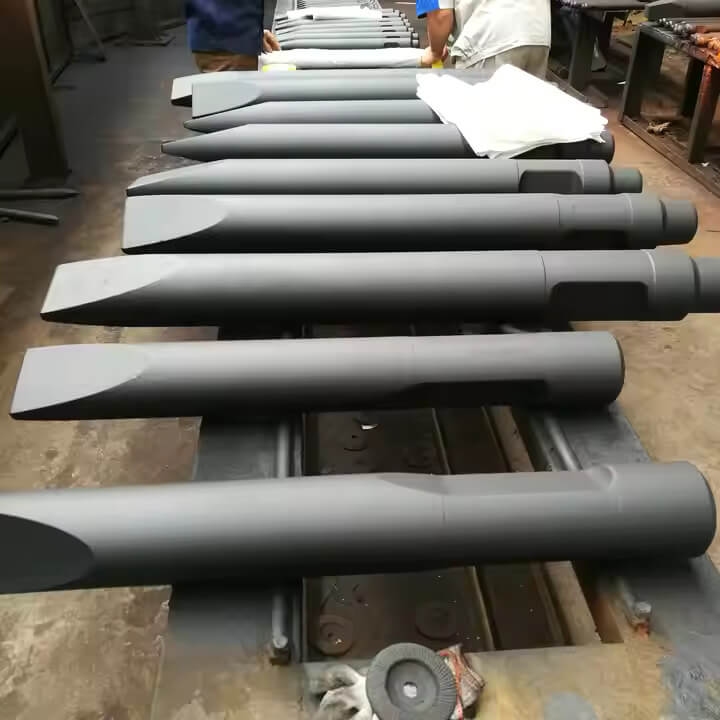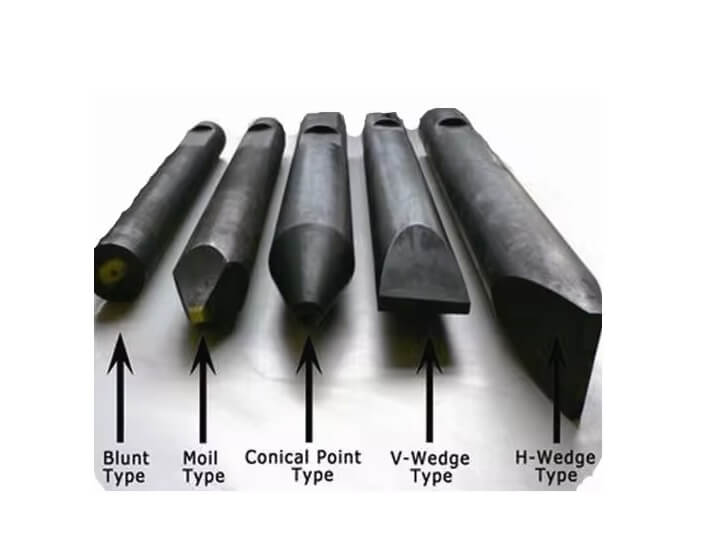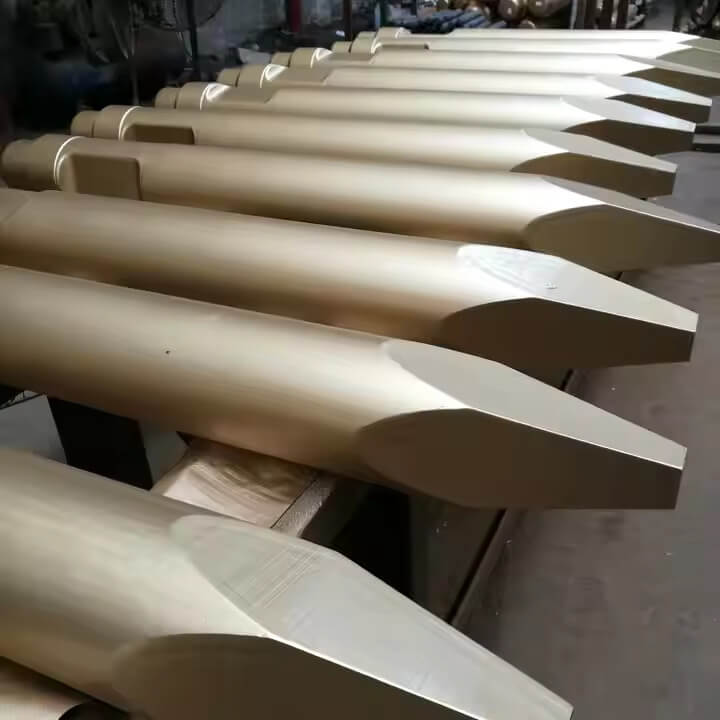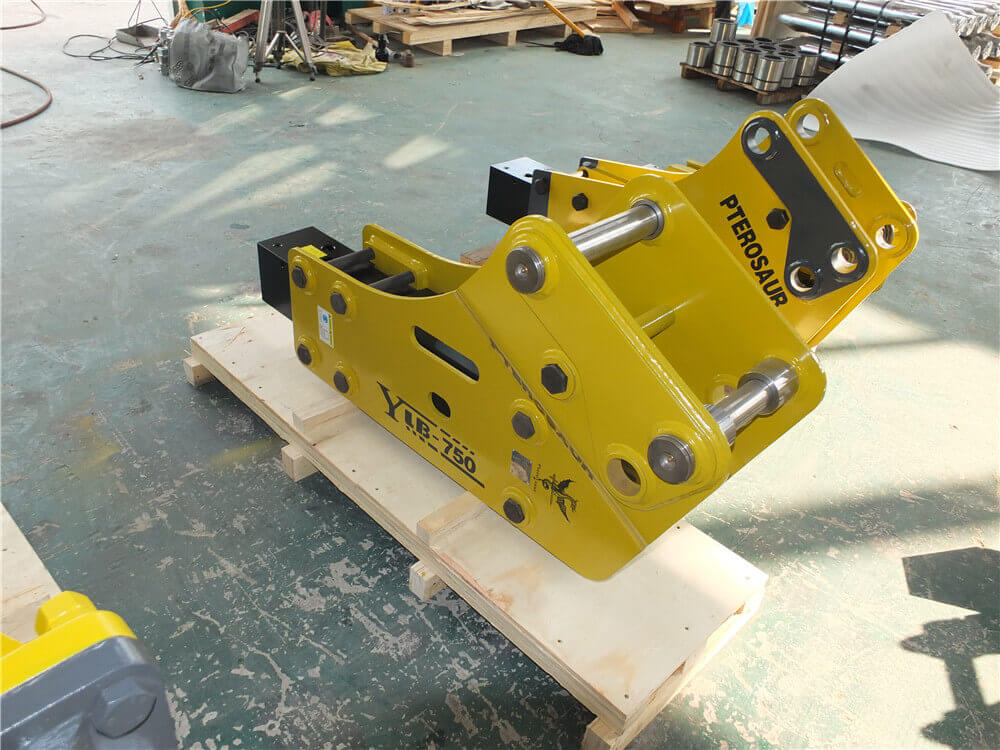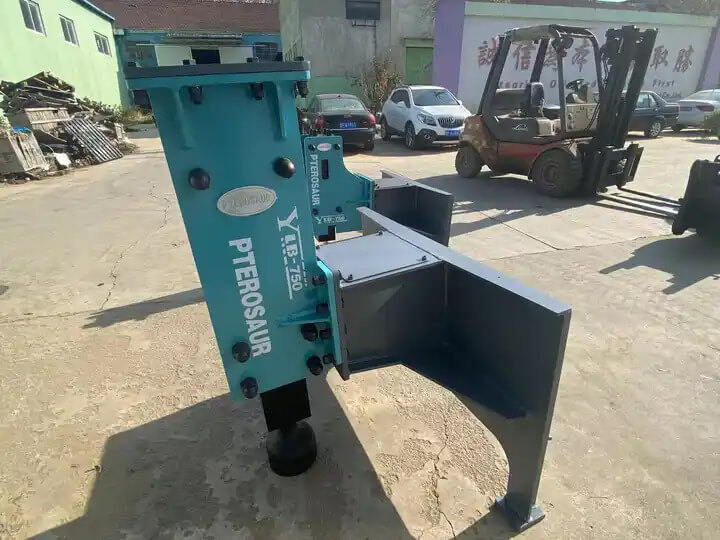Material: 40CrMo, 42CrMo
Chisel Diameter: 45-210 mm
Chisel Types: Moil Point, Blunt Tool, Flat, Wedge
Processing: Advanced Heat Treatment, Anti-Wear
Certification: CE & ISO
Overview
Choosing the right breaker chisel is essential for excavator efficiency and productivity. For engineering professionals looking to understand breaker chisel price factors, quality, and compatibility, this guide provides a detailed look into standard specifications, the key advantages of various models, typical application scenarios, real user feedback, and frequently asked questions.
Key Specifications for Breaker Chisels
| Chisel Model | Compatibility | Length (mm) | Diameter (mm) | Material Hardness (HRC) | Average Price Range |
|---|---|---|---|---|---|
| Light Duty | 1-3 ton excavators | 400-600 | 50-80 | 45-50 | $100 – $250 |
| Medium Duty | 4-6 ton excavators | 700-900 | 80-120 | 50-55 | $300 – $500 |
| Heavy Duty | 7-10 ton excavators | 900-1200 | 120-150 | 55-60 | $600 – $900 |
| Extreme Duty | 10+ ton excavators | 1200+ | 150+ | 55-65 | $1,000+ |
Note: Prices are averages and may vary depending on manufacturer, region, and material composition. Please contact us for exact pricing and specifications tailored to your needs.
Factors Affecting Breaker Chisel Price
- Material Quality
High-quality alloy steel chisels generally have a higher price due to improved durability and resistance to wear, which reduces replacement frequency. - Size and Compatibility
Larger chisels designed for high-tonnage excavators are typically more expensive as they require more material and robust construction. - Application-Specific Design
Chisels crafted for specialized tasks, such as breaking particularly dense rock or demolition in tight spaces, often come with a premium due to added engineering precision. - Brand and Manufacturer
Reputable brands may command higher prices but also provide additional benefits, such as warranty, performance consistency, and longer tool life.
Advantages of Quality Breaker Chisels
- Extended Lifespan: Investing in high-quality chisels reduces overall maintenance costs and enhances operational efficiency.
- Improved Performance: Precision engineering delivers optimal power transfer, reducing the number of strikes needed per job.
- Safety: Durable chisels reduce the likelihood of breakage or other malfunctions that could lead to onsite hazards.
Typical Application Scenarios
- Demolition Work
Breaker chisels in the medium to heavy-duty range are ideal for controlled demolitions in urban settings. Their design minimizes vibration transfer to the excavator arm, ensuring stability and precision. - Rock Breaking and Quarrying
Heavy-duty and extreme-duty chisels are essential for rock-breaking applications. Their robust construction and enhanced impact force make them suitable for dense rock and mining projects. - Foundation and Roadwork
Medium-duty chisels excel in concrete and asphalt applications, where controlled force is necessary to avoid over-breaking while still achieving efficiency.
Customer Feedback
Mark T., Demolition Contractor
“After trying several brands, I found that investing in a premium heavy-duty chisel was worth the higher price. It lasts longer and provides consistent performance on hard concrete.”
Jane P., Roadwork Operator
“We use medium-duty chisels for asphalt removal, and it’s been cost-effective. I recommend looking beyond the price and focusing on durability for high-usage applications.”
Lucas D., Quarry Supervisor
“For breaking large rocks, we use the extreme-duty chisels. Although the upfront cost is high, their longevity in such harsh conditions pays off.”
Frequently Asked Questions (FAQ)
1. What determines the price difference among breaker chisels?
The primary factors include material quality, chisel size, compatibility with specific machinery, and manufacturer reputation. Larger, highly durable chisels cost more due to the robust materials and manufacturing processes involved.
2. How do I choose a chisel that balances cost and performance?
Evaluate the nature of your project. If your work involves heavy-duty applications, invest in a premium chisel for its extended lifespan. For lighter work, a medium or light-duty chisel may suffice at a lower price point.
3. Does the price affect the lifespan of the chisel?
In general, higher-priced chisels made with quality materials and advanced manufacturing techniques tend to last longer, especially in rigorous applications.
4. Are there cost-effective options for low-frequency use?
Yes, for occasional projects, lighter-duty chisels offer a balance between affordability and adequate performance. Always ensure the chisel aligns with your machine’s tonnage and application needs.
Conclusion
Understanding breaker chisel prices involves more than just the upfront cost; it’s about investing in a tool that aligns with your project needs and operational budget. With various options available, from light-duty to extreme-duty chisels, selecting the right tool will enhance productivity and reduce replacement frequency. For specific inquiries on chisel prices and recommendations, reach out to our team to ensure the best fit for your requirements.

